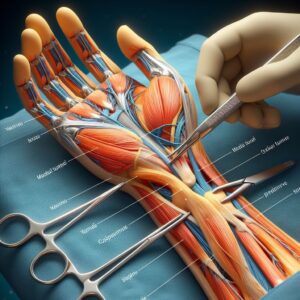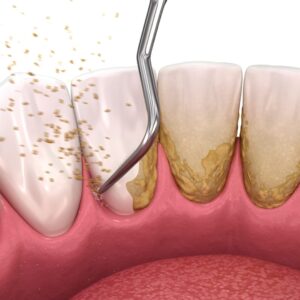Description
Familiarity with treatment
Microdermabrasion is a cosmetic procedure that involves the gentle exfoliation of the outermost layer of the skin using a small handheld device. Here’s a breakdown of the procedure based on the search results:
Procedure Overview: Microdermabrasion is a non-invasive treatment that aims to improve the appearance of the skin by removing dead skin cells and stimulating cell turnover. It is typically performed by a licensed skin care professional, either in a medical office or a spa setting.
Exfoliation Process: During the procedure, the skin care specialist uses a handheld device that sprays or rubs fine crystals onto the skin. These crystals gently exfoliate the surface, removing the top layer of dead skin cells. The device may also have a vacuum function to suction away the exfoliated skin particles.
Benefits: Microdermabrasion can provide several benefits, including exfoliating the skin, reducing signs of aging, and improving the skin’s overall appearance. It can help with issues such as light scarring, discoloration, sun damage, stretch marks, age spots, hyperpigmentation, fine lines, wrinkles, and enlarged pores.
Suitable for All Skin Types: Microdermabrasion is generally considered safe for all skin types. It is a non-invasive procedure that can be performed on various areas of the body, including the face, neck, back, hands, or chest.
Preparation: There is usually minimal preparation required before microdermabrasion. However, it is recommended to discuss your skin concerns, past cosmetic procedures, allergies, and medical conditions with a skin care professional before undergoing the treatment. You may be advised to avoid sun exposure, tanning creams, waxing, and exfoliating products in the days leading up to the procedure.
Procedure Duration and Aftercare: The duration of a microdermabrasion session typically ranges from 30 to 60 minutes. After the procedure, you may experience temporary redness, swelling, dryness, or flakiness of the skin. It is important to follow the aftercare instructions provided by your healthcare professional, which may include avoiding sun exposure, using moisturizer, and practicing gentle skincare.
Who is it suitable for?
Microdermabrasion is generally suitable for individuals with specific skin concerns or skincare goals. Here’s a summary of the suitability of microdermabrasion based on the search results:
Skin Concerns: Microdermabrasion can be beneficial for individuals with various skin concerns, including dull or sallow skin, mild acne, acne discoloration, pick marks, superficial acne scars, sun-damaged skin, uneven skin tone, and clogged pores. It can also help soften shallow lines and wrinkles.
Skin Types: Microdermabrasion is generally safe and effective for all skin types, including different skin tones and textures. The exfoliating crystals used in the procedure are very fine and unlikely to cause damage to the skin.
Busy Lifestyles: Microdermabrasion may be a suitable treatment option for individuals with busy lifestyles who are looking for minimal benefits with virtually no side effects or downtime. It is a relatively quick procedure that does not require anesthesia or numbing agents.
Deeper Acne Scars: While microdermabrasion can improve mild acne scars, individuals with deeper acne scars may require a longer series of treatments or may benefit from other procedures such as surgical dermabrasion, chemical peeling, or laser resurfacing.
Pre-existing Skin Irritation: If the skin is already irritated or experiencing inflammation, it may be advisable to postpone microdermabrasion until the skin has healed. It’s important to consult with a healthcare professional or dermatologist to determine the suitability of microdermabrasion based on your specific skin condition.
Who is it not suitable for?
Based on the search results, here are some factors that may make microdermabrasion not suitable for certain individuals:
Skin Infections: Microdermabrasion should not be performed on individuals with active skin infections, such as impetigo or herpes. The procedure can potentially spread the infection to other areas of the skin 1.
Inflammatory Acne: Microdermabrasion may not be the treatment of choice for individuals with inflammatory acne. The procedure can potentially worsen inflammation and cause discomfort when performed over inflamed pimples 2.
Bleeding Disorders: Individuals with bleeding disorders may not be suitable candidates for microdermabrasion.
Open Sores, Warts, or Sunburn: Microdermabrasion should be avoided on areas with open sores, active warts, or sunburned skin.
Keloid Scarring: Individuals who are prone to developing keloid scars should avoid microdermabrasion.
Rosacea: Microdermabrasion can potentially cause flare-ups of rosacea, a skin condition characterized by facial redness and sensitivity.
Deeper Scarring or Wrinkles: Microdermabrasion may not be the most effective treatment for individuals with more significant scarring, stretch marks, or deep wrinkles 3.
Pregnancy: Pregnant women are generally advised to avoid microdermabrasion.
Advantages
Microdermabrasion offers several advantages for individuals looking to improve the appearance of their skin. Here are the key benefits mentioned in the search results:
Skin Rejuvenation: Microdermabrasion is a skin-exfoliating treatment that can help improve the overall appearance of the skin. By removing the outer layer of dead skin cells, it reveals smoother, softer, and more youthful-looking skin.
Minimal Risk and Rapid Recovery: Compared to more invasive resurfacing methods like dermabrasion, chemical peels, or laser resurfacing, microdermabrasion has lower risks and a quicker recovery time. It is a non-invasive procedure that typically requires no downtime, allowing individuals to resume their normal activities soon after treatment.
Improvement of Various Skin Conditions: Microdermabrasion can address various skin concerns, including early signs of aging (such as fine lines and age spots), sun damage, acne, superficial scarring, and uneven skin tone. It can also help improve the appearance of dull or sallow skin.
Suitable for Different Areas of the Body: Microdermabrasion can be performed on various areas of the body, including the face, neck, back, hands, chest, and upper thighs. It offers flexibility in targeting specific areas of concern.
Safe and Well-Tolerated: Microdermabrasion is generally considered a safe procedure with minimal risks. It is suitable for most skin types and tones. However, it’s important to consult with a healthcare professional or dermatologist to assess your specific skin condition and determine if microdermabrasion is suitable for you.
Affordability: Microdermabrasion is often more affordable compared to other cosmetic procedures. The cost can vary depending on factors such as the expertise of the specialist, the number of sessions, the type of microdermabrasion, and the location of the clinic.
Complications
Based on the search results, here are some potential complications and side effects associated with microdermabrasion:
Temporary Skin Reactions: After microdermabrasion, individuals may experience temporary side effects such as skin swelling, redness (similar to sunburn), bruising, a burning or stinging sensation, and increased sensitivity to sunlight. These reactions usually subside within a few days.
Eye Irritation: If the crystals used in microdermabrasion come into contact with the eyes, it can cause eye irritation. Care should be taken to protect the eyes during the procedure.
Risk of Viral Infections: Microdermabrasion can potentially increase the risk of autoinoculation of viral cutaneous lesions (such as molluscum contagiosum) and reactivation of latent herpes simplex virus in an affected dermatome. Precautions should be taken for individuals with a history of these conditions.
Skin Discoloration: In rare cases, microdermabrasion can cause temporary or permanent uneven changes in skin color. Darkening of the skin may occur due to sun exposure in the days and months following the procedure.
Formation of Scars: While microdermabrasion is generally considered a low-risk procedure, there is a small risk of scarring. This risk is higher for individuals with a tendency to develop keloid scars.
Previous care
Based on the search results, here are some recommendations for post-care and potential complications associated with microdermabrasion:
Post-Care Instructions: After microdermabrasion, it is important to follow the post-care instructions provided by your healthcare professional. These instructions may include:
- Keeping the new skin clean and moisturized.
- Using anti-inflammatory creams or cold compresses if necessary.
- Avoiding sun exposure for a few days immediately after the procedure.
- Drinking plenty of water to maintain hydration.
- Using moisturizers and sunscreens to protect the skin.
Temporary Side Effects: Microdermabrasion may result in temporary side effects, including:
- Pink or red complexion.
- Feeling that the skin is sun or wind-burned.
- Slight skin tightness.
- Bruised or sensitive sensation. These side effects are usually mild and subside within a few days.
Sun Protection: It is important to protect the skin from sun exposure after microdermabrasion. Sunscreen should be applied and sun exposure should be avoided for a few days following the procedure. This is to prevent potential complications such as darkening of the skin caused by sun exposure.
Avoiding Irritants: It is recommended to avoid things that might irritate the skin after microdermabrasion. This includes avoiding excessive exercise, swimming in chlorinated pools, and using products that may irritate the skin.
Less Downtime: Compared to more invasive procedures like dermabrasion, microdermabrasion generally has less downtime. The skin may be temporarily pink but fully recovers within 24 hours.
Aftercare
Aftercare following microdermabrasion is essential to ensure proper healing and maximize the benefits of the treatment. Here are some common recommendations for microdermabrasion aftercare based on the search results:
Keep the Skin Clean and Moisturized: It is important to keep the newly treated skin clean and moisturized. Use a gentle cleanser and apply a moisturizer recommended by your healthcare professional to prevent dryness and promote healing.
Avoid Exfoliating Agents: Refrain from using any exfoliating agents, such as scrubs or exfoliating creams, for at least one week after microdermabrasion. The skin is already exfoliated during the treatment, and further exfoliation can cause irritation or damage.
Protect from Sun Exposure: Protect the treated skin from sun exposure by wearing a broad-spectrum sunscreen with SPF 30 or higher. Sun exposure can increase the risk of complications and darken the skin. It is recommended to avoid direct sun exposure for a few days after the procedure.
Avoid Heat and Sweating: Avoid activities that may cause excessive sweating or heat for the first 24 hours after microdermabrasion. This includes hot showers, saunas, steam rooms, and intense exercise. Heat and sweating can irritate the skin and delay the healing process.
Avoid Harsh Chemicals and Irritants: Avoid using harsh chemicals, strong cleansers, or skincare products with potential irritants, such as alcohol or fragrances, on the treated skin. Opt for gentle, non-irritating products to minimize the risk of adverse reactions.
Stay Hydrated: Drink plenty of water to keep your body and skin hydrated, which can aid in the healing process and maintain skin health.
Follow Post-Care Instructions: It is important to follow any specific post-care instructions provided by your healthcare professional or dermatologist. They may provide additional guidance tailored to your specific needs and skin condition.




Reviews
There are no reviews yet.